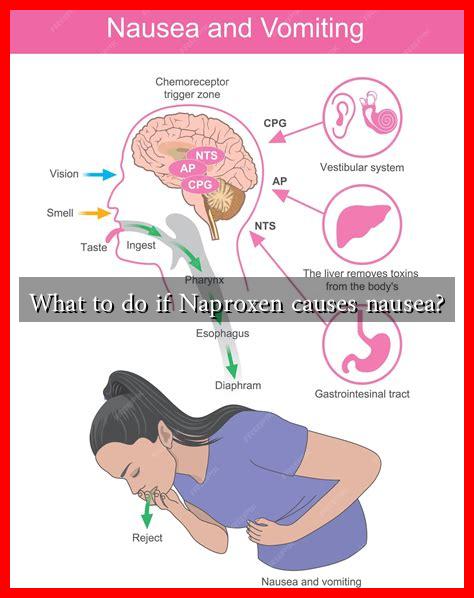-
Table of Contents
- What to Do If Naproxen Causes Nausea?
- Understanding Naproxen and Its Side Effects
- Why Does Naproxen Cause Nausea?
- What to Do If You Experience Nausea from Naproxen
- 1. Take with Food
- 2. Stay Hydrated
- 3. Adjust the Dosage
- 4. Consider Alternative Medications
- 5. Use Antacids or Anti-nausea Medications
- When to Seek Medical Attention
- Conclusion
What to Do If Naproxen Causes Nausea?
Naproxen is a nonsteroidal anti-inflammatory drug (NSAID) commonly used to relieve pain, reduce inflammation, and lower fever. While it is effective for many individuals, some may experience side effects, including nausea. If you find yourself feeling nauseous after taking Naproxen, it’s essential to understand the potential causes and what steps you can take to alleviate this discomfort.
Understanding Naproxen and Its Side Effects
Naproxen works by inhibiting the production of certain chemicals in the body that cause inflammation and pain. While it is generally well-tolerated, side effects can occur. According to the FDA, common side effects of Naproxen include:
- Stomach pain
- Nausea
- Heartburn
- Dizziness
- Headache
Nausea can be particularly distressing and may lead to discontinuation of the medication. Understanding why nausea occurs can help in managing this side effect effectively.
Why Does Naproxen Cause Nausea?
Nausea from Naproxen can arise due to several factors:
- Gastrointestinal Irritation: Naproxen can irritate the stomach lining, leading to discomfort and nausea.
- Dosage: Higher doses of Naproxen may increase the likelihood of experiencing nausea.
- Timing of Intake: Taking Naproxen on an empty stomach can exacerbate nausea.
- Individual Sensitivity: Some individuals may be more sensitive to NSAIDs and experience gastrointestinal side effects more readily.
What to Do If You Experience Nausea from Naproxen
If you find that Naproxen is causing nausea, consider the following strategies to alleviate your symptoms:
1. Take with Food
One of the simplest ways to reduce nausea is to take Naproxen with food. Consuming a small meal or snack can help buffer the stomach lining and minimize irritation.
2. Stay Hydrated
Dehydration can worsen feelings of nausea. Ensure you drink plenty of fluids, preferably water or herbal teas, to stay hydrated.
3. Adjust the Dosage
Consult your healthcare provider about adjusting your dosage. Sometimes, a lower dose can provide relief from pain without causing nausea.
4. Consider Alternative Medications
If nausea persists, discuss alternative pain relief options with your doctor. Other NSAIDs or non-NSAID medications may be more suitable for you.
5. Use Antacids or Anti-nausea Medications
Over-the-counter antacids may help neutralize stomach acid and reduce nausea. Additionally, anti-nausea medications can be prescribed by your doctor if necessary.
When to Seek Medical Attention
While mild nausea can often be managed at home, certain symptoms warrant immediate medical attention:
- Severe or persistent nausea
- Vomiting blood or material that looks like coffee grounds
- Severe abdominal pain
- Signs of an allergic reaction, such as rash, itching, or difficulty breathing
If you experience any of these symptoms, contact your healthcare provider or seek emergency medical care.
Conclusion
Naproxen can be an effective medication for managing pain and inflammation, but it is not without its side effects, including nausea. Understanding the reasons behind this side effect and implementing strategies to mitigate it can help you continue to use Naproxen effectively. Always consult with your healthcare provider before making any changes to your medication regimen. By taking proactive steps, you can manage nausea and maintain your quality of life while benefiting from the pain-relieving properties of Naproxen.
For more information on managing medication side effects, you can visit the FDA’s consumer updates.

